MahaShivratri, the great night of Lord Shiva, is one of the most sacred Hindu festivals celebrated with deep devotion and reverence. It marks the divine union of Lord Shiva and Goddess Parvati and is observed with fasting, meditation, and prayers. While many devotees visit temples, celebrating MahaShivratri at home can be equally fulfilling when done with sincerity and devotion.
In this guide, we will explore the significance of MahaShivratri, how to prepare for the festival, perform a step-by-step puja, and create a spiritual atmosphere at home. We will also incorporate insights from Swami Mukundananda and Jagadguru Kripaluji Maharaj on how to please Lord Shiva on this auspicious day.
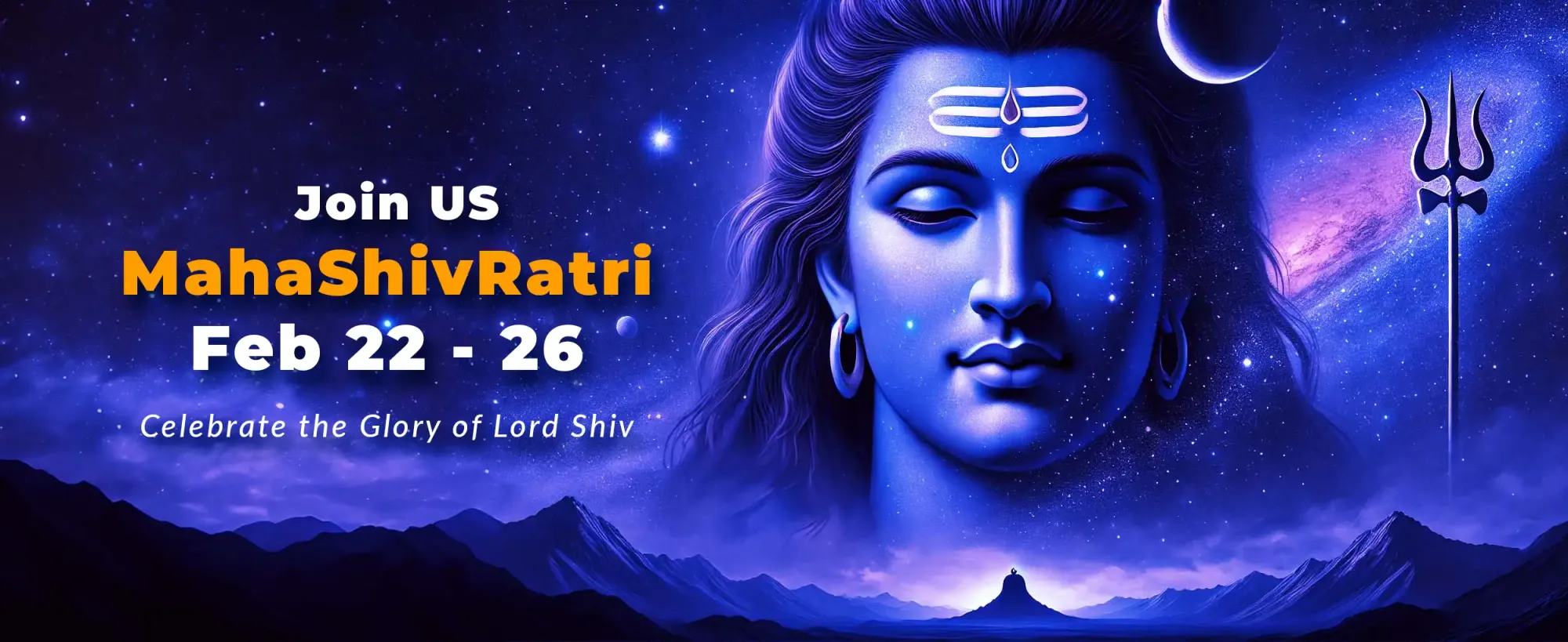
Understanding the Significance of MahaShivratri

MahaShivratri, meaning "the great night of Shiva," falls on the 14th night of the dark fortnight in the Hindu month of Phalguna (February–March). Unlike other Hindu festivals that celebrate external victories, MahaShivratri is an inward-focused festival aimed at self-purification and spiritual upliftment.
According to scriptures, MahaShivratri is significant for several reasons:
- Divine Wedding of Shiva and Parvati – MahaShivratri is considered the night when Lord Shiva married Goddess Parvati, symbolizing the harmony of masculine and feminine energies.
- Shiva's Cosmic Dance (Tandava) – Many believe that on this night, Lord Shiva performs the Tandava, the dance of creation, preservation, and destruction.
- Manifestation of the Lingam – Another legend states that on MahaShivratri, Lord Shiva appeared as an infinite pillar of light, representing his formless aspect, the Shiva Lingam.
- Overcoming Darkness and Ignorance – Devotees observe fasting, chant mantras, and meditate to seek Lord Shiva’s blessings for wisdom and liberation.
By understanding the deeper meaning of MahaShivratri, we can celebrate the festival with greater devotion and spiritual awareness.
Getting Ready for the Festival

Preparation is key to making MahaShivratri a deeply spiritual experience at home. Here are some essential steps to get ready for the festival:
1. Clean Your Home and Puja Space
Before the festival, clean your house thoroughly, especially the space where you will perform the puja. A tidy and pure environment helps in creating a sacred atmosphere.
2. Arrange Puja Items
Gather all necessary puja materials, including:
- A Shiva Lingam or a picture of Lord Shiva
- Bel Patra (Bilva leaves)
- Fresh flowers, especially white and blue ones
- Fruits, sweets, and Panchamrit (a mixture of milk, honey, yogurt, ghee, and sugar)
- Incense sticks, diya (oil lamp), and camphor
- Rudraksha mala for chanting
- Gangajal (holy water) for purification
3. Set Intentions for the Day
Decide how you want to observe MahaShivratri—whether by fasting, meditating, or chanting mantras throughout the night. Keep a positive and devotional mindset.
Step-by-Step Puja Guide

Performing a MahaShivratri puja at home involves several steps:
1. Sankalp (Taking a Vow)
Before starting the puja, take a vow (sankalp) in front of Lord Shiva, expressing your devotion and seeking his blessings.
2. Dhyana (Meditation)
Begin by meditating on Lord Shiva. Close your eyes, take deep breaths, and visualize Shiva in his meditative form.
3. Invocation (Avahan)
Invoke Lord Shiva’s presence by chanting:
"Om Namah Shivaya"
or
"Om Tryambakam Yajamahe Sugandhim Pushtivardhanam Urvaarukamiva Bandhanaan Mrityor Mukshiya Maamritat."
4. Offering of Water and Milk (Abhishekam)
Gently pour water or milk over the Shiva Lingam while chanting "Om Namah Shivaya."
5. Offering Bel Patra and Flowers
Place Bilva leaves and fresh flowers on the Lingam, as they are dear to Lord Shiva.
6. Lighting a Diya and Incense
Offer a lit diya and incense sticks, symbolizing the removal of darkness and ignorance.
7. Chanting Mantras
Recite Shiva mantras or the Maha Mrityunjaya mantra to seek blessings for health and prosperity.
8. Performing Aarti
Sing the Shiva Aarti while waving camphor in front of the deity.
9. Offering Fruits and Prasadam
Conclude the puja by offering fruits and sweets to Lord Shiva and then distributing prasad among family members.
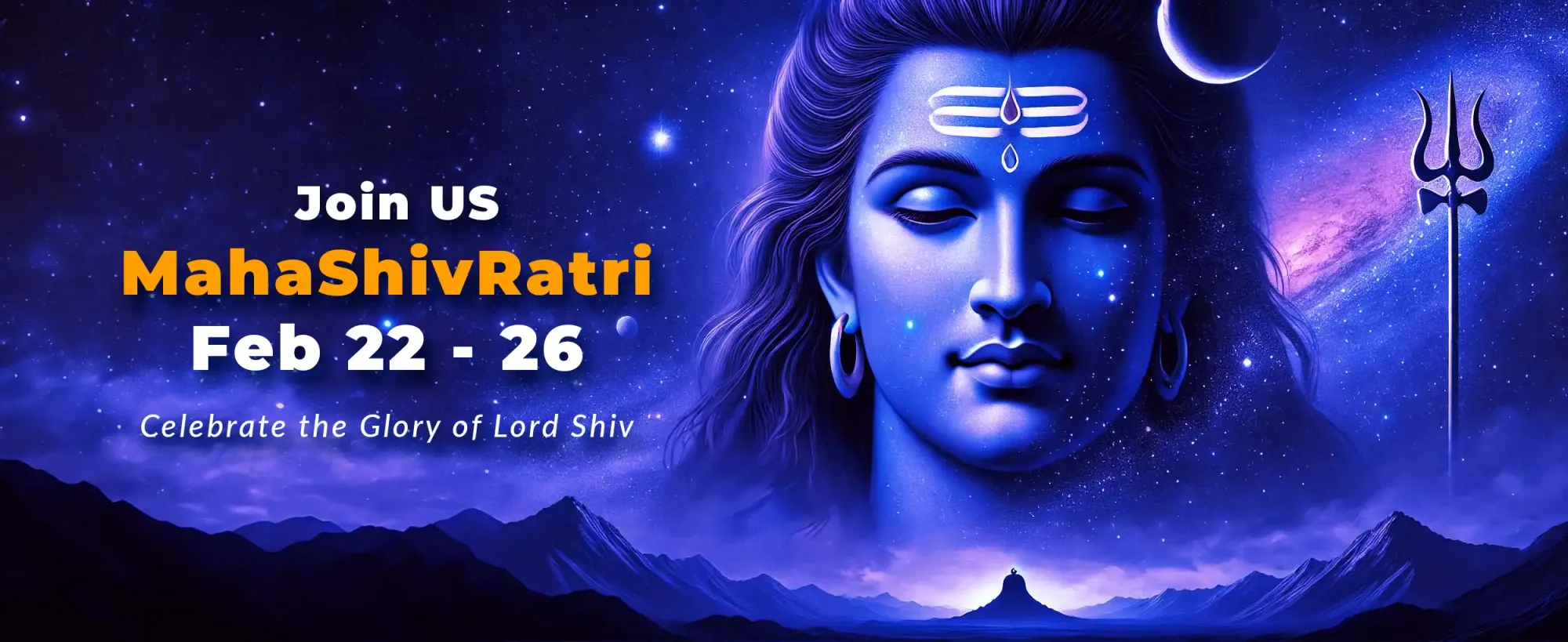
Fasting on MahaShivratri: Significance and Detailed Guidelines
Fasting (Vrat) on MahaShivratri is considered one of the most powerful spiritual practices, believed to purify the mind, body, and soul while drawing devotees closer to Lord Shiva. Observing a fast on this auspicious day helps in developing self-discipline, controlling desires, and focusing on divine consciousness. Let’s explore the significance of MahaShivratri fasting, its spiritual benefits, and detailed guidelines on how to observe it correctly.
Significance of Fasting on MahaShivratri
1. Spiritual Purification and Devotion
MahaShivratri fasting is not just about abstaining from food; it is about cleansing the inner self and surrendering to Lord Shiva. It symbolizes self-control, dedication, and detachment from worldly distractions.
2. Seeking Lord Shiva’s Blessings for Moksha (Liberation)
According to scriptures, fasting on MahaShivratri with sincerity can help devotees attain Moksha, the ultimate liberation from the cycle of birth and death. It is said that those who observe this fast with faith are freed from past karmic sins and blessed with divine grace.
3. Enhancing Mental and Physical Strength
Fasting strengthens mental resilience, improves focus, and helps develop patience. It also has physical benefits, such as detoxifying the body and improving digestion.
4. Symbolizing Victory Over Darkness
Shiva represents inner consciousness and enlightenment, while fasting signifies overcoming desires, ego, and negativity. Devotees fast to remind themselves of their higher purpose and spiritual goals.
5. Alignment with Cosmic Energy
On MahaShivratri, planetary positions create an atmosphere that is highly favorable for meditation and self-awareness. Fasting enhances spiritual vibrations and helps devotees absorb this divine energy.
Types of MahaShivratri Fasting
MahaShivratri fasting can be observed at different levels depending on individual strength, devotion, and health conditions.
1. Nirjala Vrat (Complete Dry Fast – No Food or Water)
- The strictest form of fasting, where devotees abstain from both food and water for 24 hours.
- It requires strong determination and is typically observed by ascetics and those deeply devoted to Lord Shiva.
- Not recommended for elderly people, children, or those with health issues.
2. Phalahar Vrat (Fruit and Liquid-Based Fast)
- Devotees consume only fruits, dry fruits, and liquids such as milk, coconut water, or fruit juices.
- This is the most common type of MahaShivratri fasting and is widely practiced.
- Keeps energy levels stable while maintaining the sanctity of the fast.
3. Ekahara Vrat (One Meal Fast)

- Devotees eat a single sattvic (pure) meal during the day, either before sunset or after completing the night-long puja.
- The meal typically includes fruits, nuts, milk, and non-grain vegetarian food like sabudana (tapioca), sweet potatoes, or kuttu (buckwheat).
4. Partial Fast
- For those who are unable to fast completely, a light vegetarian meal without onion, garlic, or grains is consumed.
- While not a strict fast, it still allows devotees to participate in the spiritual aspects of MahaShivratri.
What to Eat During MahaShivratri Fast?
During the fast, only sattvic (pure and light) food should be consumed. Avoid spicy, oily, and heavy meals.
Allowed Foods:
✅ Fruits: Bananas, apples, pomegranates, papayas, oranges, dates, figs, and raisins.
✅ Dairy Products: Milk, curd, buttermilk, paneer (cottage cheese), and ghee.
✅ Nuts and Seeds: Almonds, cashews, walnuts, peanuts, foxnuts (makhana), chia seeds, flaxseeds.
✅ Natural Sweeteners: Honey, jaggery, rock sugar (misri).
✅ Flours: Buckwheat flour (kuttu ka atta), water chestnut flour (singhare ka atta), amaranth flour (rajgira atta).
✅ Root Vegetables: Potatoes, sweet potatoes, yam, and colocasia (arbi).
✅ Sabudana (Tapioca pearls): Used to make khichdi, kheer, or vada.
✅ Spices: Sendha namak (rock salt), cumin, black pepper, and coriander.
Foods to Avoid:
❌ Grains such as wheat, rice, lentils, and pulses.
❌ Onion, garlic, and tamasic (heavy) food.
❌ Non-vegetarian food and alcohol.
❌ Regular table salt (only rock salt should be used).
Abhishekam is an essential ritual that symbolizes purification. You can perform it using:
- Water – For purification
- Milk – For seeking blessings
- Honey – For sweetening speech and relationships
- Yogurt – For prosperity
- Panchamrit – For divine grace
Each offering should be accompanied by chanting "Om Namah Shivaya."
Creating a Spiritual Atmosphere
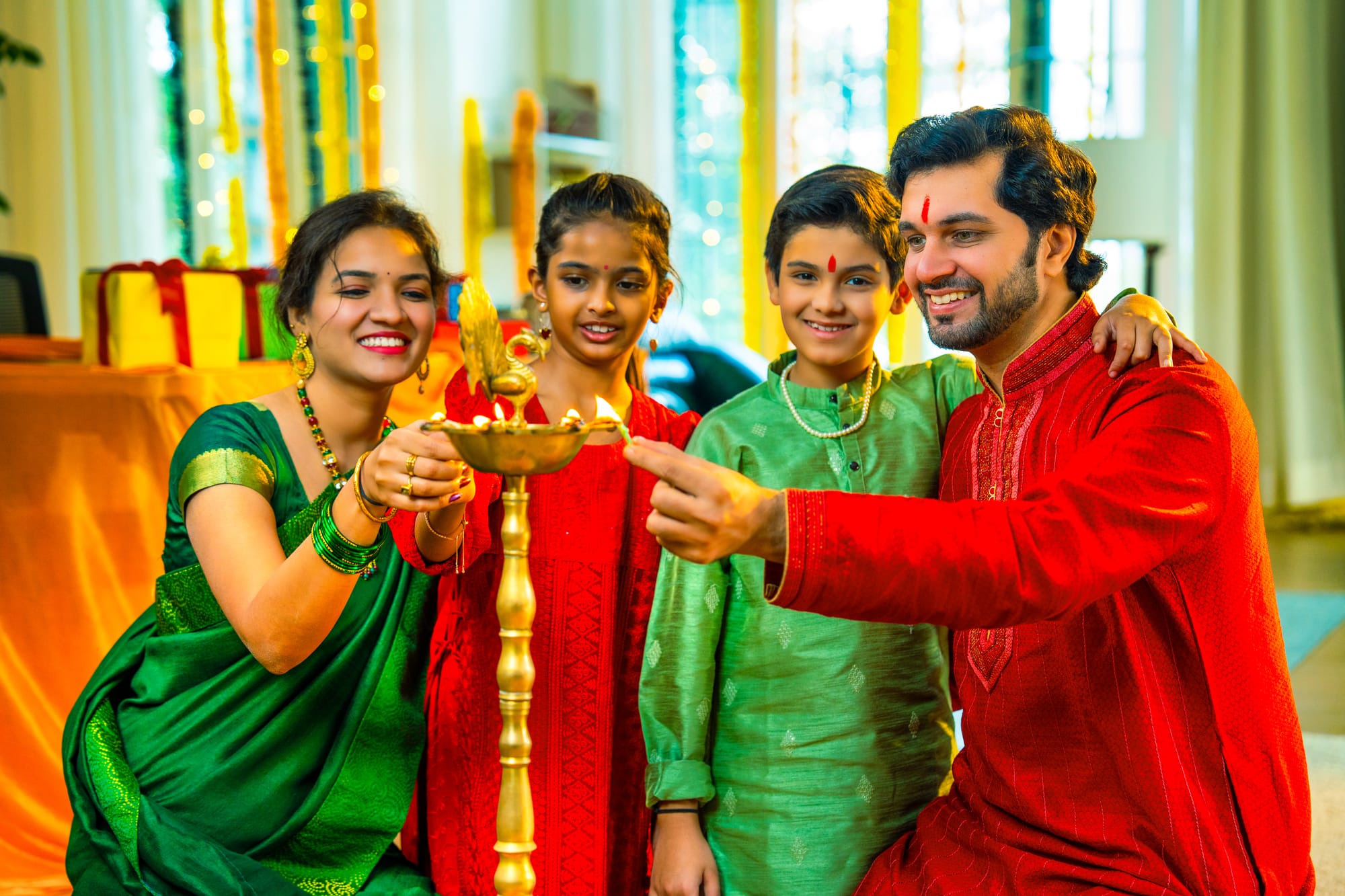
To enhance your MahaShivratri experience at home:
- Play Bhajans and Mantras – Listen to devotional Shiva bhajans throughout the day.
- Read Scriptures – Read the Shiva Purana or Bhagavad Gita for spiritual wisdom.
- Practice Meditation – Meditate on the form of Lord Shiva, focusing on the third eye chakra.
- Observe Silence – Reduce distractions and engage in self-reflection.
Visiting the Temple on MahaShivratri
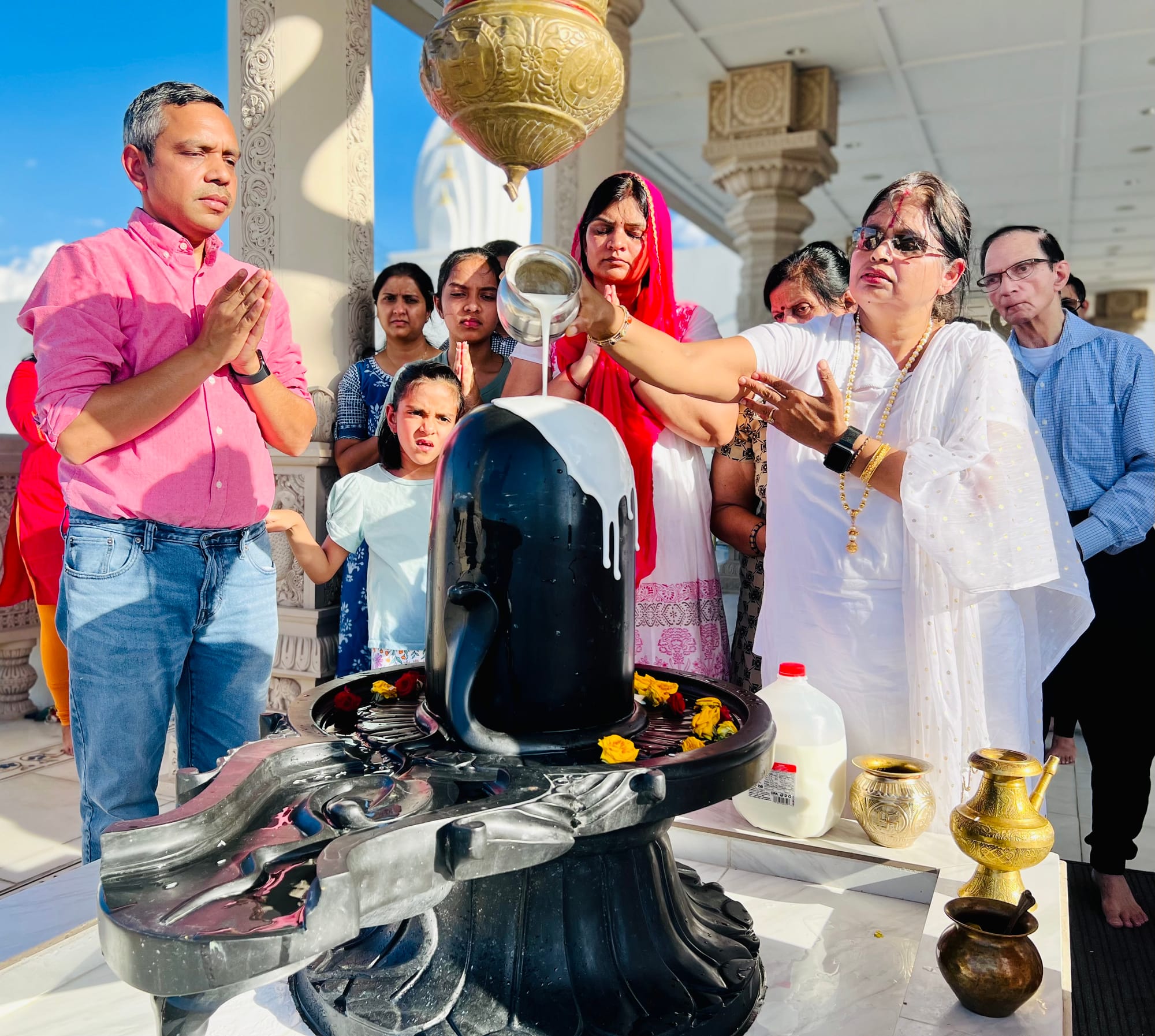
If possible, visit a Shiva temple at night to witness the grand celebrations. Participate in bhajans, kirtans, and the midnight aarti, which is considered highly auspicious.
How to Celebrate MahaShivratri at the Temple
- Offer milk and Bel Patra to the Shiva Lingam.
- Join in Rudrabhishek ceremonies.
- Engage in night-long chanting and bhajans.
- Seek blessings from priests and elders.
How to Please Lord Shiva on MahaShivratri (Teachings of Swami Mukundananda and Kripaluji Maharaj)
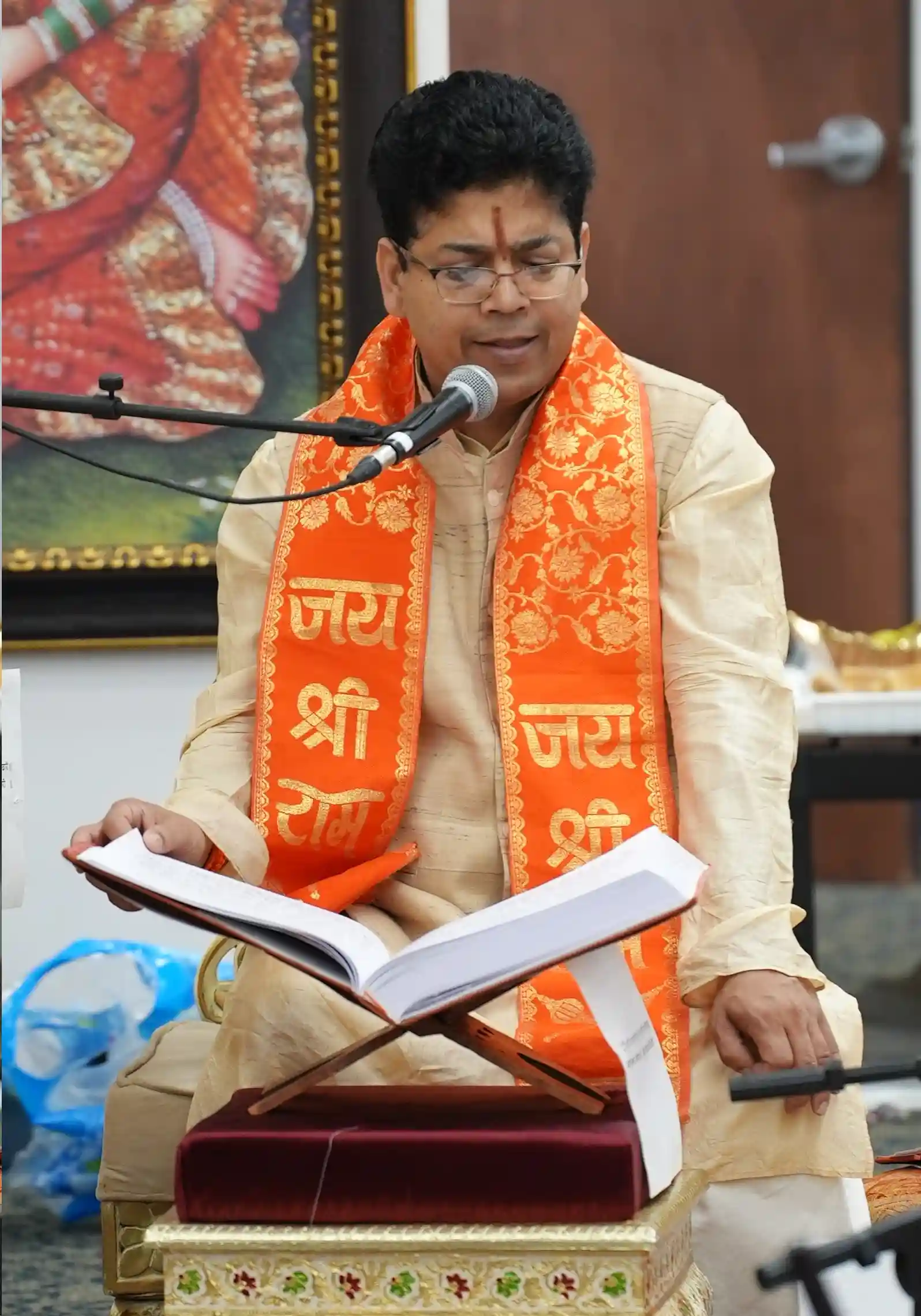
Both Swami Mukundananda and Jagadguru Kripaluji Maharaj emphasize that devotion (bhakti) is the best way to please Lord Shiva. Some key teachings include:
- Chanting His Name with Devotion – Repeating "Om Namah Shivaya" with sincerity attracts divine grace.
- Practicing Detachment – True worship involves renouncing material desires and surrendering to God.
- Serving Others Selflessly – Helping the needy and practicing kindness pleases Lord Shiva.
- Meditating on His Divine Qualities – Contemplate Shiva’s qualities of patience, wisdom, and detachment.
- Reading Scriptures – The Bhagavad Gita and Shiva Purana provide spiritual insights that elevate devotion.
Join us for the 5-Day Grand Mahashivratri Celebrations at Radha Krishna Temple of Dallas! Immerse yourself in the divine energy of Lord Shiva with Abhishekam, Rudrabhishek, Maha Aarti, devotional kirtans, enlightening discourses, and more!
Don’t miss this spiritually uplifting event filled with devotion and sacred rituals. Experience divine bliss and deepen your connection with Lord Shiva!
📅 Dates: February 22 – 26, 2025
📍 Location: Radha Krishna Temple of Dallas
Visit RadhaKrishnaTemple.net/event/Mahashivratri for the full schedule and details!
🌸 Come, celebrate, and seek Lord Shiva’s divine blessings! 🕉️"
Conclusion
MahaShivratri is an opportunity to connect with Lord Shiva at a deeper level. Whether you celebrate at home or in a temple, the key is devotion, discipline, and inner reflection. By fasting, performing Abhishekam, chanting mantras, and following the teachings of great spiritual masters, you can experience divine bliss and receive Lord Shiva’s blessings.
May this MahaShivratri bring peace, prosperity, and spiritual growth to all! Har Har Mahadev! 🚩
FAQs on How to Celebrate MahaShivratri at Home:
1. How can I observe MahaShivratri at home if I cannot visit a temple?
You can observe MahaShivratri at home by setting up a small altar with a Shiva Lingam or an image of Lord Shiva, offering milk, water, and bilva (bael) leaves, and chanting sacred mantras like Om Namah Shivaya. Engage in prayers, meditation, and listening to discourses on Lord Shiva.
2. What are the key rituals to follow at home during MahaShivratri?
Performing an abhishekam (ritual bathing) of the Shiva Lingam with water, milk, honey, or yogurt, lighting a ghee lamp, offering flowers and fruits, and reciting Maha Mrityunjaya Mantra or Shiva Chalisa are key rituals. Observing a fast and staying awake through the night in devotion is also significant.
3. Can I celebrate MahaShivratri without fasting?
Yes, if fasting is not possible, you can consume sattvic (pure and vegetarian) foods like fruits, milk, and nuts. The most important aspect is maintaining a devotional mindset, chanting Shiva’s name, and engaging in spiritual activities.
4. What is the significance of staying awake on MahaShivratri?
Staying awake on MahaShivratri, known as Jaagran, signifies devotion and spiritual discipline. It represents overcoming ignorance with wisdom and remaining conscious of Lord Shiva’s presence. Devotees chant prayers, sing bhajans, and meditate to experience divine energy.
5. How can families with children celebrate MahaShivratri at home?
Families can engage children by narrating stories of Lord Shiva, encouraging them to draw or color pictures of Shiva, singing bhajans together, and performing a simple Shiva puja. This helps them learn about the significance of the festival in an engaging way.
6. What are the benefits of chanting ‘Om Namah Shivaya’ on MahaShivratri?
Chanting Om Namah Shivaya purifies the mind, calms emotions, and brings inner peace. It helps devotees connect with Lord Shiva’s divine energy, seek His blessings for wisdom and spiritual growth, and eliminate negative karma.
Resources:
Shiv Bhajan & Leela Videos
Devotional Shiv Bhajan
MahaShivratri Special: How to worship Lord Shiva
